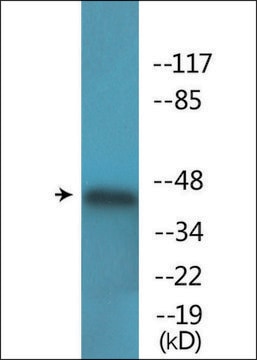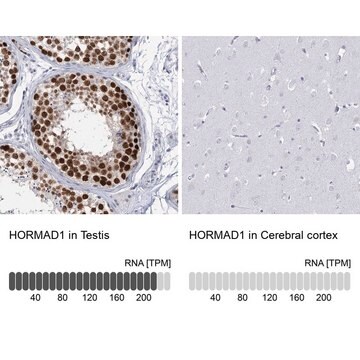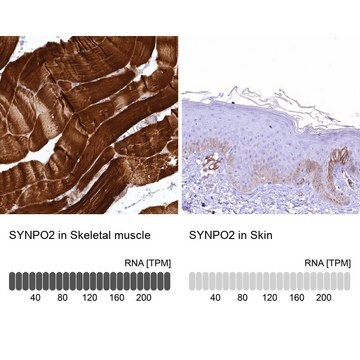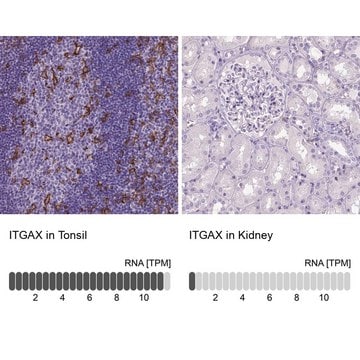詳細
We are committed to bringing you greener alternative products, which adhere to one or more of The 12 Principles of Green Chemistry.This antibody is Preservative-free, produced without the harm or sacrifice of animals and exceptionally stable to allow for ambient shipping and storage if needed and thus aligns with "Waste Prevention", "Designing Safer Chemicals" and "Design for Energy Efficiency".
Click here for more information.
ZooMAb® antibodies represent an entirely new generation of recombinant monoclonal antibodies. Each ZooMAb® antibody is manufactured using our proprietary recombinant expression system, purified to homogeneity, and precisely dispensed to produce robust and highly reproducible lot-to-lot consistency. Only top-performing clones are released for use by researchers. Each antibody is validated for high specificity and affinity across multiple applications, including its most commonly used application. ZooMAb® antibodies are reliably available and ready to ship when you need them.
特異性
Clone 1D11 is a ZooMAb® Rabbit recombinant monoclonal antibody that specifically detects CD167a/DDR1. It targets an epitope within 18 amino acids from the cytoplasmic domain within the C-terminal half.
免疫原
KLH-conjugated linear peptide corresponding to 18 amino acids from the cytoplasmic region within the C-terminal half.
アプリケーション
Quality Control Testing
Evaluated by Western Blotting in T47D cell lysate.
Western Blotting Analysis: A 1:10,000 dilution of this antibody detected CD167a/DDR1 in T47D cell lysate.
Tested Applications
Immunohistochemistry (Paraffin) Analysis: A 1:100 dilution from a representative lot detected CD167a/DDR1 in human small intestine tissue sections.
Affinity Binding Assay: A representative lot of this antibody bound CD167a/DDR1 peptide with a KD of 3.5 x 10-7 in an affinity binding assay.
Immunocytochemistry Analysis: A 1:100 dilution from a representative lot detected CD167a/DDR1 in MCF-7 cells.
Flow Cytometry Analysis: 0.1 µg from a representative lot detected CD167a/DDR1 in one million MCF-7 cells.
Note: Actual optimal working dilutions must be determined by end user as specimens, and experimental conditions may vary with the end user.
ターゲットの説明
Epithelial discoidin domain-containing receptor 1 (UniProt: Q08345; also known as EC:2.7.10.1, Epithelial discoidin domain receptor 1, CD167 antigen-like family member A, Cell adhesion kinase, Discoidin receptor tyrosine kinase, HGK2, Mammary carcinoma kinase 10, MCK-10, CD167a) is encoded by the DDR1 (also known as CAK, EDDR1, NEP, NTRK4, PTK3A, RTK6, TRKE) gene (Gene ID: 780) in human. CD167a/DDR1 is a single-pass type I, homodimeric membrane glycoprotein that is synthesized with a signal peptide (aa 1-20), which is subsequently cleaved off to produce the mature protein that contains an extracellular domain (aa 21-417), a transmembrane domain (aa 418-438), and a cytoplasmic domain (aa 439-913). It is expressed at low levels in most adult tissues with highest levels in the brain, lung, placenta, and kidney. It is detected at high levels in several carcinoma cells. It displays tyrosine kinase activity and functions as cell surface receptor for fibrillar collagen. It regulates cell attachment to the extracellular matrix, remodeling of the extracellular matrix, cell migration, differentiation, survival, and cell proliferation. Collagen binding triggers a signaling pathway that involves SRC and leads to the activation of MAP kinases. It regulates remodeling of the extracellular matrix by up-regulation of the MMP2, MMP7, and MMP9, and thereby facilitates cell migration and wound healing. It is also required for normal blastocyst implantation during pregnancy, for normal mammary gland differentiation and lactation. CD167a/DDR1 undergoes autophosphorylation in response to fibrillar collagen binding and glycosylation at asparagine 211 is shown to prevent autophosphorylation from occurring in the absence of collagen. This ZooMAb® recombinant monoclonal antibody, generated by our propriety technology, offers significantly enhanced specificity, affinity, reproducibility, and stability over conventional monoclonals. (Ref.: Fu, H-L., et al. (2014). J. Biol. Chem. 289(13); 9275-9287; Ram, R., et al. (2006). J. Neurooncol. 76(3); 239-248; Hou, G., et al. (2002). Circ. Res. 90(11); 1147-1149).
物理的形状
Purified recombinant rabbit monoclonal antibody IgG, lyophilized in PBS, 5% Trehalose, normal appearance a coarse or translucent resin. The PBS/trehalose components in the ZooMAb formulation can have the appearance of a semi-solid (bead like gel) after lyophilization. This is a normal phenomenon. Please follow the recommended reconstitution procedure in the data sheet to dissolve the semi-solid, bead-like, gel-appearing material. The resulting antibody solution is completely stable and functional as proven by full functional testing. Contains no biocide or preservatives, such as azide, or any animal by-products. Larger pack sizes provided as multiples of 25 µL.
再構成
0.3 mg/mL after reconstitution at 25 µL per vial. Please refer to guidance on suggested starting dilutions and/or titers per application and sample type.
保管および安定性
Recommend storage of lyophilized product at 2-8°C; Before reconstitution, micro-centrifuge vials briefly to spin down material to bottom of the vial; Reconstitute each vial by adding 25 µL of filtered lab grade water or PBS; Reconstituted antibodies can be stored at 2-8°C, or -20°C for long term storage. Avoid repeated freeze-thaws.
法的情報
ZooMAb is a registered trademark of Merck KGaA, Darmstadt, Germany
免責事項
Unless otherwise stated in our catalog or other company documentation accompanying the product(s), our products are intended for research use only and are not to be used for any other purpose, which includes but is not limited to, unauthorized commercial uses, in vitro diagnostic uses, ex vivo or in vivo therapeutic uses or any type of consumption or application to humans or animals.










